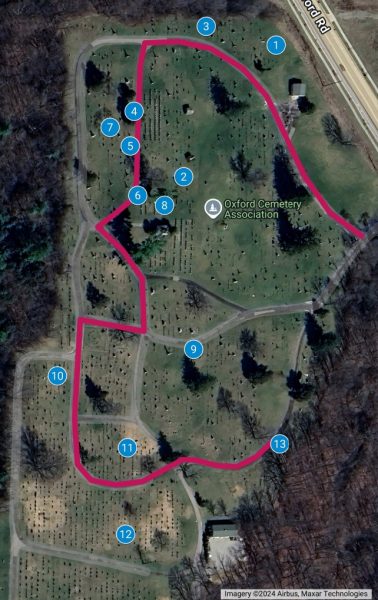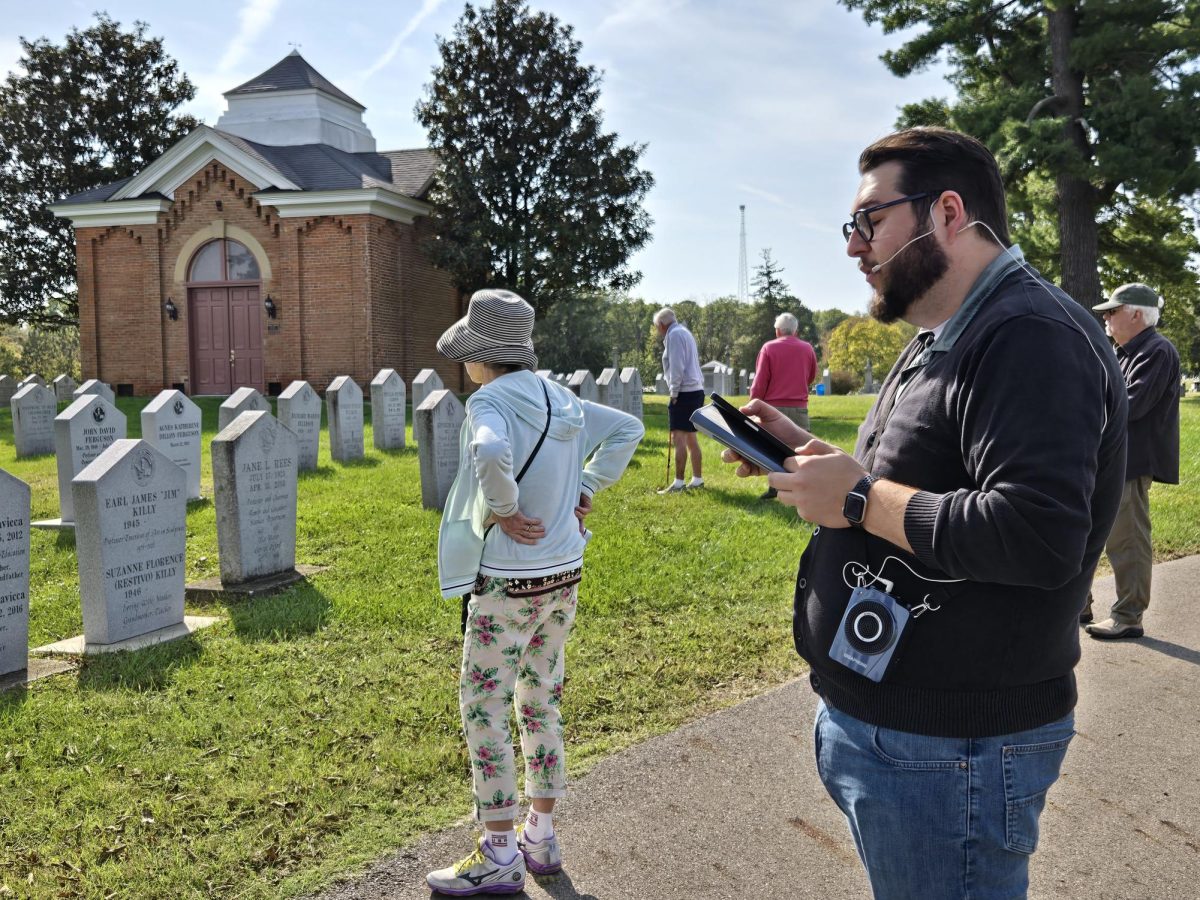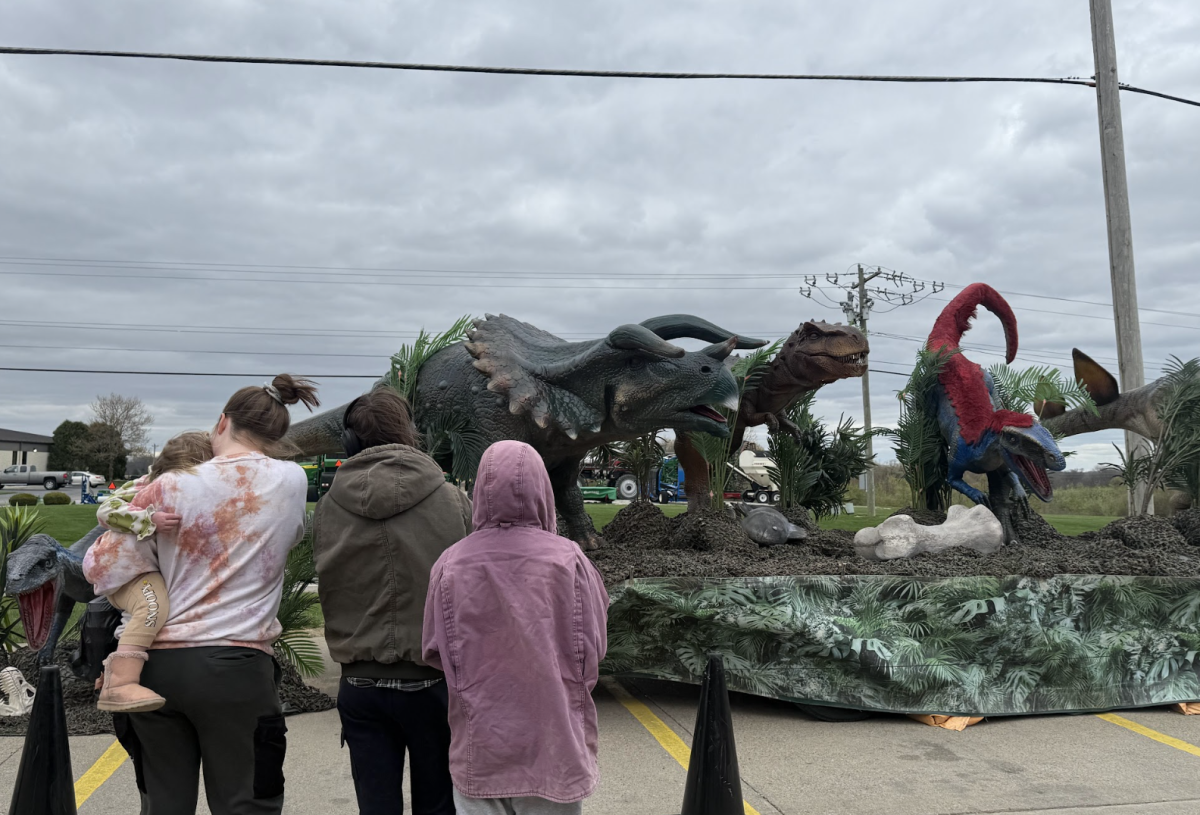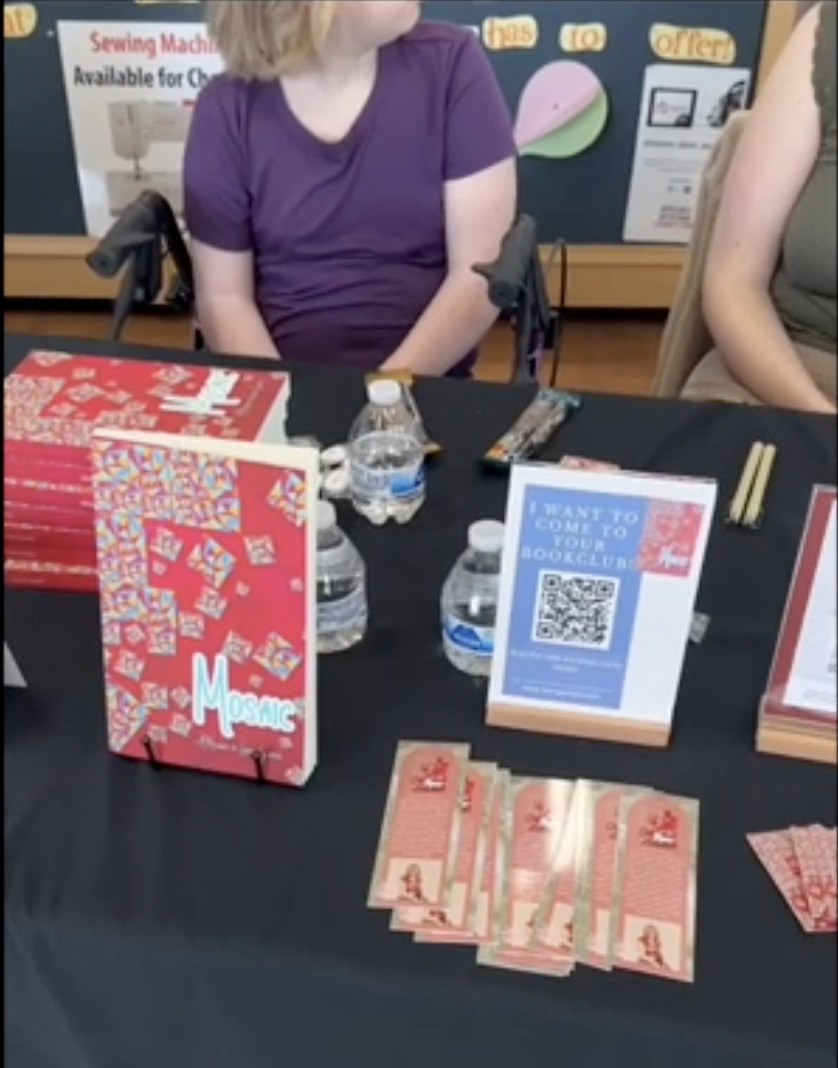The small crowd of about a dozen people gathered in Oxford Cemetery on Saturday morning were not mourners, but locals hoping to learn a little about the history of their town.
This is the second year that tours have been held in the cemetery in the month of October, a collaboration between Lane Public Library, the William Holmes McGuffey House and Museum and Oxford Parks and Recreation. The goal of the tour is to teach local history through the stories of people who called Oxford home during their lives and now rest here eternally.

“It’s a way to tell local history that’s approachable for people,” said Brad Spurlock, director of the Smith Library of Regional History at Oxford Lane Library and the guide for Saturday’s tour.
As the tour group meandered along the cemetery’s paths on the unusually hot fall morning, they pointed out the names that adorn more than just headstones.
“I work in Upham Hall!” one said, excitedly pointing to Alfred H. Upham’s grave.
Others recognized names of professors they knew, streets they drove on every day, or places where they made fond memories. They wasted no time asking Spurlock every question that came to mind, even ones he couldn’t easily answer.
Participants wanted to know about headstones, why some did not match or why some had fallen over. They took note of the grandest monuments and mausoleums and wondered aloud at the accomplishments of the people buried beneath them. They wondered where Oxford’s black and Jewish families were buried. Some of them may have to wait for future tours for their questions to be answered.
Spurlock said the history of a cemetery has two pieces: The history of the cemetery itself, and the history of the people buried there.
According to the City of Oxford, the place itself dates back to 1855, when the Oxford Cemetery Association was founded to relocate the burials that were soon to be displaced by the railroad. In 2023, the Association ceased operations and the city took over the maintenance of the cemetery.
The bulk of the tour is concerned with the people who were laid to rest there over the course of over 150 years rather than the land they are buried under.
This year’s tour focuses on individuals associated with Miami University and Western College for Women. This is to coincide with the 50th anniversary of Miami’s acquisition of Western College.
Among them are famous Miami presidents like Andrew D. Hepburn, Alfred Upham and Robert White McFarland, who was a professor during the tumultuous years before the Civil War and served as a captain during the war. McFarland is also the only person who was also featured in last year’s tour.
Some of the figures associated with Western College are Florence C. Brown and James Ramsey Patterson, whose residences, Langstroth Cottage and Patterson Place, are still fixtures of Western Campus today.
Other interesting stories include James Allen Gordon Sr., the first Miami graduate to compete in the Olympics, Olga Bibza Adkins, a dance professor who studied in Europe just before World War II, and Joseph Bourgoin, a professor of languages who was supposedly French nobility and whose resting place in the cemetery is not marked.
“When you’re talking about individual people you can pull people that give you kind of different perspectives on local history or you can pull people that are important or significant for different reasons for local history,” Spurlock said. “I think by the time you get done doing the tour it gives people a good idea about like these are the kind of things that occurred in the past and this is why it’s significant.”
Spurlock said the research process starts with a long list of local historical figures. The final list is selected by a committee consisting of Spurlock, McGuffey House Curator Jennifer Lorenzetti, and Alex French, a member of the city council and the main organizer of the event.
French first had the idea for a cemetery tour on long walks through the trails around Peffer Park during the pandemic. She began to take notice of all the names on headstones that she recognized from buildings and street signs around Oxford and realized the potential for teaching local history.
“It really just helps personalize Oxford’s different phases of history,” French said. “When you walk past Upham Hall you can say, oh I know who that’s named for and the things he did while he lived here.”
French, who graduated from Miami in 2010, has personally enjoyed being able to learn about the town she calls home while working on the project.
“I don’t think Oxford was really on my list of places to live forever,” she said. “But now that I am back as a permanent resident, and loving living in Oxford, it is really meaningful and forges a connection to Oxford that I never expected to forge by learning about other people who made Oxford their permanent home.”
French said that she would like to see future tours cover Woodside Cemetery or highlight topics like veterans’ or women’s history. Spurlock’s plans for the future include a booklet or some other published material containing the information that he and other library staff have collected while conducting research for the tours. He said he hopes to have enough stories collected after another year or two.
French said that while grief is a human experience that is uniquely universal, it is not all that cemeteries have to offer a community. They can also be a place to educate the public and preserve the experiences of others who were a part of the community decades or centuries ago.
“I think about a lot like people who maybe don’t have people to come visit their headstones or their graves, people whose families have moved or have passed,” French said. “And you know to be able to be one of the people that remembers them and carries their stories feels like a huge honor.”
The tour will be taking place twice more this month Oct. 19 and 26. The tour on Oct. 19 is full but there are still spots for Oct. 26. Participants can register through the Oxford Parks and Recreation website.








